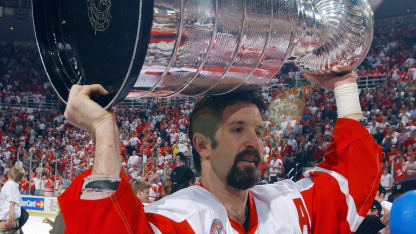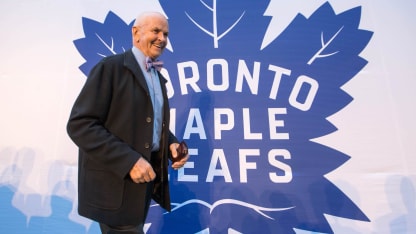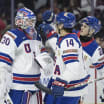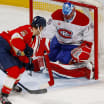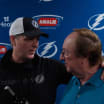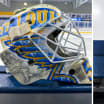You're bringing Dave Keon back into the Maple Leafs family this weekend and into your centennial season after an estrangement that goes back into the mid-1970s. How important was it for you to do this with the man who has just been voted the No. 1 player in Maple Leafs history?
"It was incredibly important. And I'll say, with all due respect to Dave, that it's incredibly important for all of our alumni to feel a part of this family. For Dave, obviously the most visible and well-known, the connection with the team wasn't quite there for reasons that I didn't really know about when I came here. I think it wasn't anything that I said on the telephone when I called to tell him we'd like his statue on Legends Row. I think the time was just right for Dave. We're lucky that he's come back. And I'll add this: I think it's incredible that he was voted by a panel from the hockey community and by our fans as the best Leaf of all time. Thank goodness he's back. It's just unbelievable how that played out."
Hockey history is very important to coach Mike Babcock, as it was to him when he was coach of the Red Wings. He'd see coach Scotty Bowman and Gordie Howe and Ted Lindsay in his midst a lot, and Mike has said it took him years in that office before he'd even move a push-pin on Scotty's bulletin board. Mike has brought part of this here, with Maple Leafs alumni nameplates in dressing-room stalls, for instance. Is this something you and he have done together? Or just because Mike wants to do it?
"A little of both. When Mike and [general manager] Lou [Lamoriello] came aboard in Toronto, the three of us sat down and said, 'Who do we want to be? It's not Detroit or the New Jersey Devils. It's Toronto. What are those things?' The connection to our alumni and our past was something that was important to all of us. When your head coach embraces that type of thing, when Mike says to Dave Keon last year when he was here for the announcement of his statue, 'Why don't you sit in and listen to our power-play and penalty-killing meetings for tonight's game,' that's not Mike being told to do something or feeling it's the right thing to do. It's just because he wants to do it. And it's great for our players.
"In your career you try to take things from places that you've been that you think worked and you try to remember the things that you felt didn't work. I thought that the connection to our past in Detroit was something that worked really well. Ted Lindsay and I used to go to lunch or dinner once every month or two when I was a player there. We developed a good friendship, a bond. I can say from firsthand experience that it was inspiring to me to hear Ted say, 'When I saw a member of the opposition in the summertime I crossed the street. It was that competitive.' So how can getting to know a person like that, to see the passion in a man of Ted's age and stature, be a bad thing? It's a great thing."

